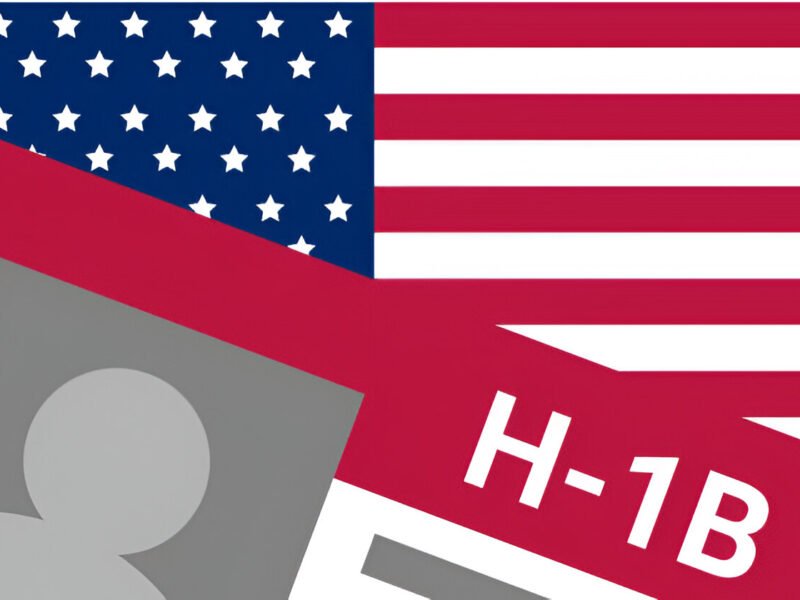Securing an H1-B role isn’t just about having the right skills. Success comes from knowing where to search, presenting yourself above the competition, and sticking to a timeline that leaves no room for error. This section covers how to target H1-B sponsoring employers, build an impressive application, and move smoothly through the H1-B registration and lottery process.
Identifying H1-B Sponsoring Employers
The H1-B process starts with finding companies ready and able to sponsor your visa. Not every US employer will do this, so your first move should be focusing your time on the right organizations.
Where to find company lists:
- Official sources: The USCIS H-1B Employer Data Hub offers searchable records of recent sponsors.
- Popular databases: Websites like H1BGrader, MyVisaJobs, and CareerNomics Masters H1B Employers Ranking provide current rankings and details.
- University career resources: Many schools, such as Yale’s Top 100 Sponsors List, aggregate sponsors for international students.
Industries most likely to sponsor:
- Technology and IT Services (Amazon, Google, Microsoft, Meta, Tata Consultancy)
- Consulting and Accounting (Deloitte, Ernst & Young, Accenture)
- Financial Services (JPMorgan Chase, Goldman Sachs)
- Healthcare & Research (major hospital systems, universities)
- Telecommunications & Engineering (Intel, Qualcomm, Cisco)
Where H1-B employers are concentrated:
- Tech hubs: Silicon Valley, Seattle, Austin, New York, Boston
- Major metro areas: Chicago, Dallas, Atlanta, Los Angeles
- University towns: Cambridge, Ann Arbor, Durham, Palo Alto
How to focus your search:
- Prioritize roles that match your degree and experience.
- Check company websites for “H1-B Sponsorship Available” or “International Applicants Welcome.”
- Use LinkedIn to connect with past and current employees who were sponsored.
Zero in on employers with a consistent history of sponsorship and open specialty roles. Apply to several companies—relying on one sponsor is risky.
Building a Competitive Application
USCIS and top H1-B employers both want more than a basic resume. Presenting a polished, specialized application makes you stand out in a sea of global candidates.
Essentials for H1-B-ready applications:
- Resume: Use US formatting—one page for less experience, two for advanced roles. Prioritize technical skills and measurable results.
- Degree equivalency: All credentials must directly relate to the job offered. If your degree is from abroad, get a professional credential evaluation showing it matches a US bachelor’s or higher.
- Transcripts and diplomas: Collect originals and certified translations if not in English.
- Experience letters: Employers like direct proof of specialized skills. Get letters on official letterhead describing your duties, projects, and impact.
- Licenses or certifications: Supply proof for jobs that require them (engineering, healthcare, law).
Tips for standing out:
- Highlight advanced technical skills, certifications, and rare experience.
- Quantify achievements with numbers—think “managed a $500,000 project,” not just “project manager.”
- Customize your resume and cover letter for each employer and job description.
- Practice articulating your career story for interviews and written statements.
Organize all documents digitally and physically. Timely application submission starts with being ready to provide any paperwork recruiters request. Remember, incomplete docs can delay sponsorship or knock you out of the process.
Navigating the H1-B Electronic Registration and Lottery
After saying yes to an offer, you (and your employer) tackle the electronic registration and lottery—a stage filled with technical steps and zero room for mistakes.
What to expect with registration:
- Account creation: The employer must create a “registrant” account on the USCIS system. Attorneys can manage submissions if needed. Pick the correct account type from the start.
- Unique registration: Each employer can register only once per candidate using valid, unexpired passport or travel documents. A duplicate means automatic rejection.
- Data accuracy: Make sure every entry matches your documents—especially name, birth date, and passport info.
- Fee payment: The 2026 fee is $215 per registration. Only credit card payments are accepted within a $99,999.99 daily transaction limit.
- Confirmation: Once submitted, the USCIS system gives a confirmation notice. Employers should save this proof.
Common mistakes to avoid:
- Duplicate registrations from the same employer or attorney.
- Typos in name, FEIN (employer identification number), or passport details.
- Registering with an expired passport.
- Mixing up organizational and attorney accounts during setup.
After submission:
- USCIS checks for errors and duplicate entries during the registration window.
- All valid registrations are entered into the lottery, which usually happens within two weeks after the window closes.
- Employers receive notification of status: “Submitted,” “Selected,” or “Not Selected.”
If you’re selected:
Your employer has 90 days to file the full H1-B petition (Form I-129) with all support documents, including the labor certification, credentials, and employment evidence.
If not selected:
Your status will read “Not Selected” or return to “Submitted” if more lotteries happen later in the year. Many try again next year or search for cap-exempt job offers (universities, nonprofits).
Keep a record of all application steps. Your sponsor’s accuracy is as important as your own—staying organized and vigilant is your edge in beating H1-B odds.
After Selection: Completing the Petition and Moving Forward
If your registration was selected in the H1-B lottery, your path is open—but this phase calls for as much attention as landing the offer. There are clear requirements for both the employer and employee as you move from selection to actual approval. You’ll have paperwork deadlines, government checks, and future planning all happening quickly. The steps below show how to turn a lottery win into a valid working visa.
Filing Labor Condition Application (LCA) and Form I-129
The first big task for your employer after selection is the Labor Condition Application (LCA), quickly followed by filing Form I-129 with United States Citizenship and Immigration Services (USCIS). Each side—employer and employee—has duties to focus on during this stage.
Employer Responsibilities:
- File and get LCA certified: The LCA (Form ETA-9035) goes to the Department of Labor. Employers must confirm they’ll pay at least the local prevailing wage and that hiring you won’t negatively impact current US workers. The LCA must be certified before the next steps can start.
- Complete Form I-129: This is the main petition to USCIS, asking them to grant H1-B status. The form requires careful detail, and the employer must provide evidence that the role is a specialty occupation.
- Fee payment: Employers must cover several mandatory fees, which can add up to several thousand dollars. These include base filing, fraud prevention, American Competitiveness and Workforce Improvement Act (ACWIA) fees, and optional premium processing (which speeds up the decision).
- Keep records: Employers must keep wage records and a copy of the certified LCA available for inspection.
Employee Responsibilities:
- Provide documents: You’ll need to give copies of your degrees, transcripts, professional licenses, and support letters from previous jobs or internships. If your credential is foreign, a certified evaluation showing its US equivalency is a must.
- Accuracy in submissions: Double-check every entry on your part—names, dates, identification numbers, and signatures. A typo or missing page can cause delays or request for evidence (RFE).
- Stay reachable: USCIS may issue an RFE for more details; prompt responses help avoid long waits or denials.
Required Supporting Documents:
Employers and employees must attach substantial evidence to support the H1-B case such as:
- Certified LCA
- Detailed job offer letter
- Employee’s qualifying diploma(s) and transcripts
- Credential evaluation (if foreign degree)
- Resume and experience letters
- Employer tax ID and corporate formation docs
- Proof of the employer-employee relationship, such as contracts or organization charts
Critical Points:
- All filings must happen within the 90-day window listed on the lottery selection notice.
- USCIS checks every detail. Any mismatch or missing item can mean a delay, RFE, or denial.
- The LCA must be certified first, so allow a week for approval before sending the full petition.
H1-B Approval, Starting Work, and Extensions
Once USCIS approves your H1-B petition, life will move quickly. You’ll have a clear legal status and a timeline for both starting work and thinking about the future.
Moving From Approval to Working:
- If you’re outside the US: Take the approval notice (I-797), schedule a visa interview at your nearest US consulate, and complete stamping. After that, you can enter the US up to 10 days before your official start date (usually October 1).
- If you’re already in the US (for example, on F-1 OPT), you can “change status” starting October 1 and begin working without leaving the country.
H1-B Period of Stay:
- The initial H1-B approval grants up to three years.
- You can renew once for another three years, for a total maximum of six years under normal circumstances.
- Some exceptions allow renewals beyond six years, especially if you have started the green card process.
Starting Work:
- You can start on the date stated in your approval notice (Form I-797), often October 1.
- Your Social Security number or records may need updating if you’re new to the US.
- Some employers ask you to complete onboarding tasks early.
Requests for Evidence and Outcomes:
Sometimes, USCIS wants more information and will send a Request for Evidence (RFE). This is not a denial but a chance to clarify a point or send additional proof. A fast and thorough reply is key to moving forward.
- If approved, you receive a notice and status updates from your employer.
- If denied, talk to your employer and legal advisor about possible appeals or next steps. Sometimes a simple fix or re-filing is an option.
Planning for Extensions or Permanent Residency:
- Extensions must be filed before your status expires. Start renewal talks at least six months before your H1-B end date.
- The H1-B visa is “dual intent,” meaning you can legally pursue a green card while on H1-B. If your employer is willing, discuss PERM labor certification and I-140 pathways for permanent residency early.
- Special rules apply for those whose green card process is underway—some can keep working and staying in the US past the six-year H1-B limit.
Key Reminders:
- USCIS processing times vary. Some cases take weeks, others months. Employers can pay for premium processing for a quicker answer.
- Keep your legal status current. Any gap or violation can hurt your chances for future visas or green card plans.
- If you change jobs, your new employer must file a transfer petition before you move.
Getting selected isn’t the finish line—it’s the start of a new process. Careful steps through the petition and approval phases set you up for long-term success in the US.
Conclusion
Securing an H1-B job in the United States depends on smart planning and strong attention to detail. Each step, from targeting proven sponsors to preparing careful documents, plays a major role in your success. Relying on timing and preparation gives you an advantage over other candidates.
Take action now while the 2025 application cycle is open. Waiting until the last minute or taking shortcuts can cost you an opportunity that comes only once a year. By following each step and acting early, you put yourself in the best possible position to launch your US career.
Thank you for reading. If this guide helped you or you have insights to share, leave a comment below or share it with someone aiming for their own H1-B breakthrough. Your path starts with the decisions you make today.








